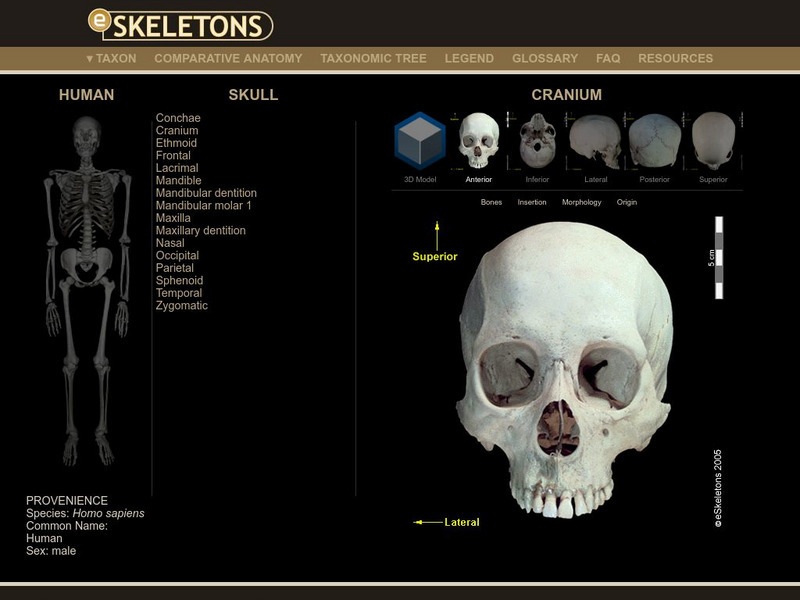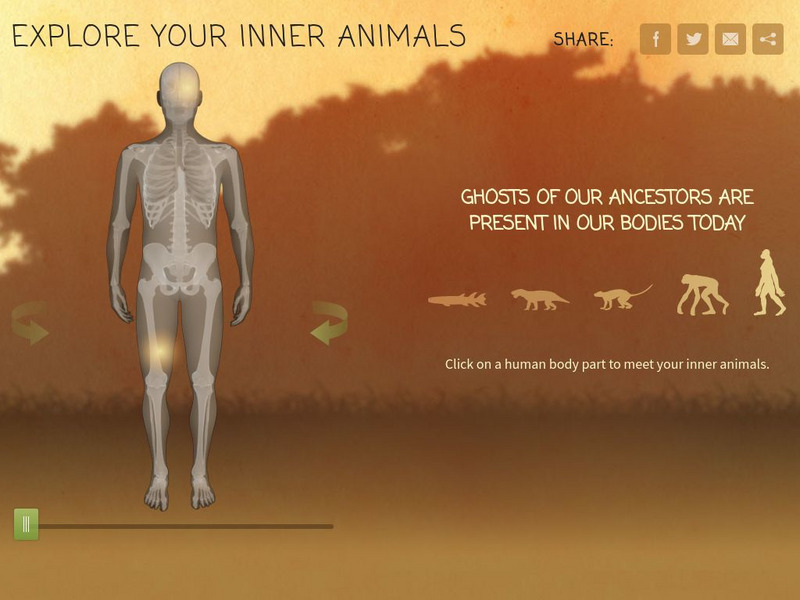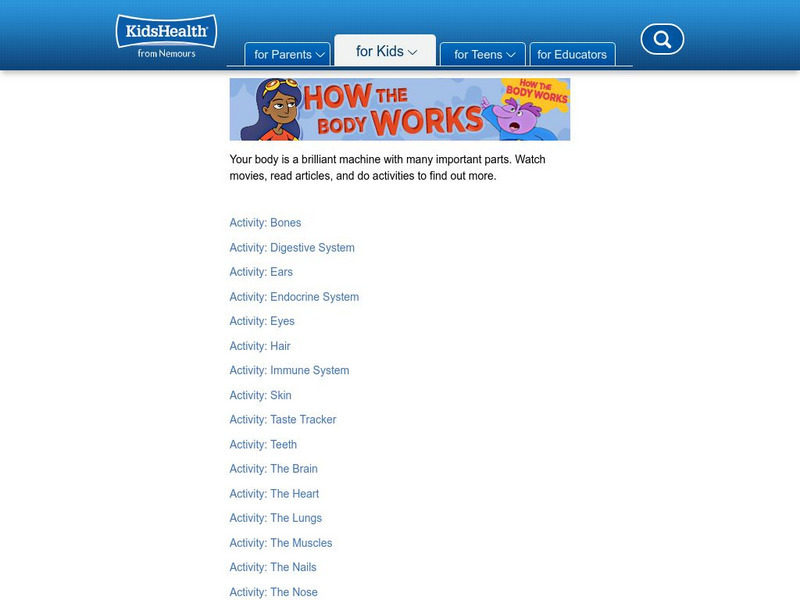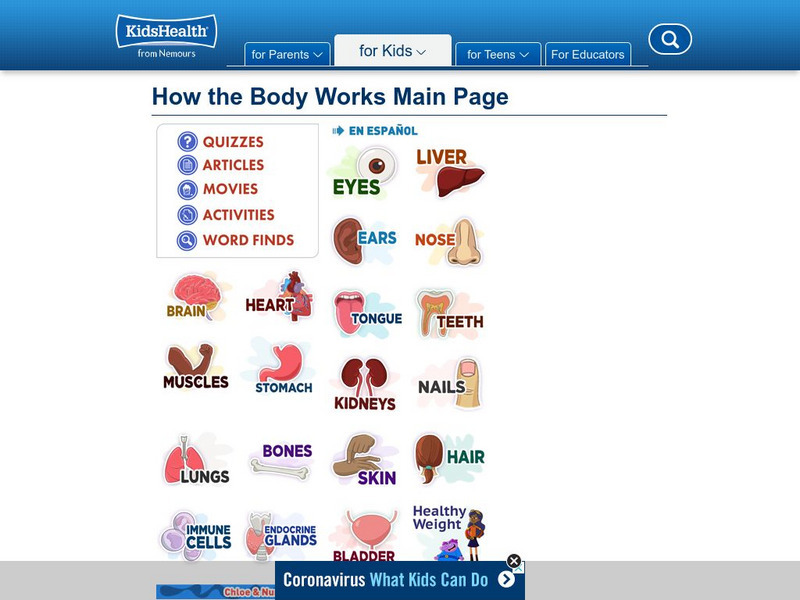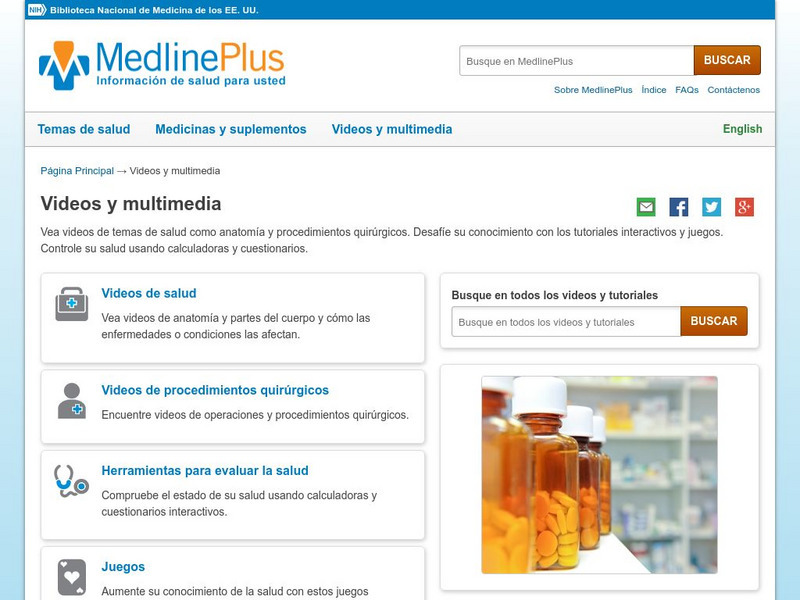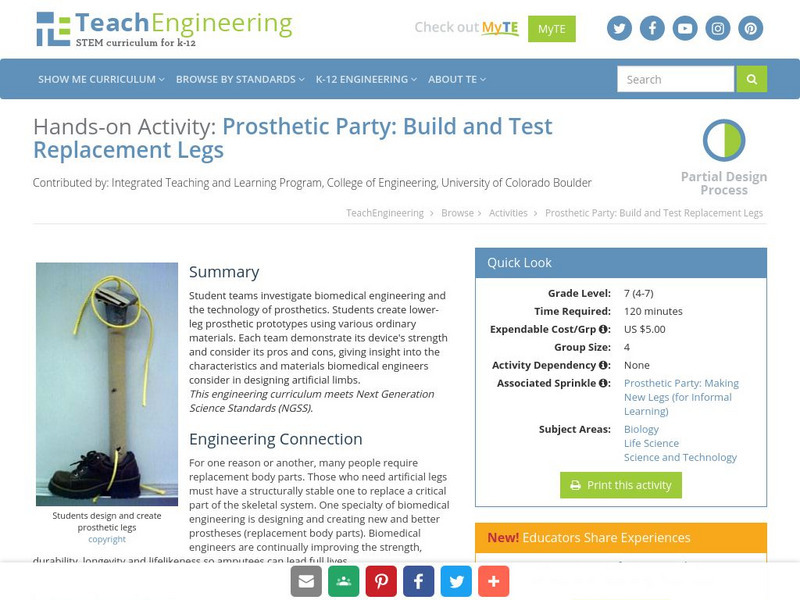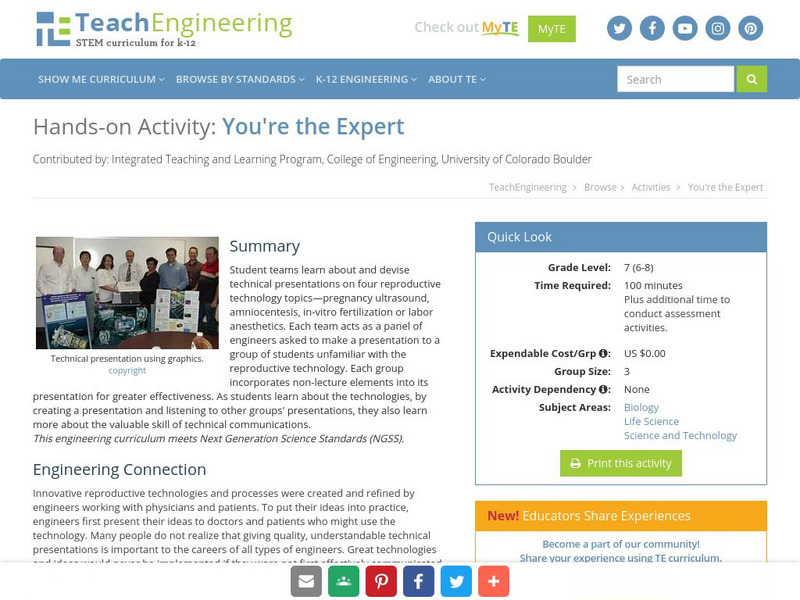Hi, what do you want to do?
National Cancer Institute at the National Institutes of Health
Seer Training Modules: Introduction to the Skeletal System
Self-guided learning activity where students learn about the structure and function of the human skeletal system. There is a short quiz at the end of the lesson to check for understanding.
National Cancer Institute at the National Institutes of Health
Seer Training Modules: Introduction to the Muscular System
Self-guided learning activity where students learn about the structure and function of the human muscular system. There is a short quiz at the end of the lesson to check for understanding.
National Cancer Institute at the National Institutes of Health
Seer Training Modules: Introduction to the Cardiovascular System
Self-guided learning activity where students learn about the structure and function of the human cardiovascular system. There is a short quiz at the end of the lesson to check for understanding.
National Cancer Institute at the National Institutes of Health
Seer Training Modules: Introduction to the Lymphatic System
Self-guided learning activity where students learn about the structure and function of the human lymphatic system. There is a short quiz at the end of the lesson to check for understanding.
National Cancer Institute at the National Institutes of Health
Seer Training Modules: Introduction to the Digestive System
Self-guided learning activity where students learn about the structure and function of the human digestive system. There is a short quiz at the end of the lesson to check for understanding.
National Cancer Institute at the National Institutes of Health
Seer Training Modules: Introduction to the Urinary System
Self-guided learning activity where students learn about the structure and function of the human urinary system. There is a short quiz at the end of the lesson to check for understanding.
TED Talks
Ted: Ted Ed: If Superpowers Were Real: Body Mass
What if manipulating body mass wasn't just the stuff of fantasies and comics? Is it scientifically possible to manipulate your body mass? In this series, creator and educator Joy Lin tackles superpowers and reveals just how...
Other
Washington University: Hemoglobin and the Heme Group:
This site from the Department of Chemistry at the Washington University provides a deetailed study of the role of hemoglobin in blood physiology. The article is somewhat in-depth, complete with pictures, charts, and a bibliography.
Other
The Visual Dictionary: Volume 3: Human Body
Academic resource where students learn about the human body through images that explain objects. Click on an image to get a fully defined, detailed view of a particular body part.
Other
Inside the Human Body: The Respiratory System (Professair's Mad Lab)
Have fun learning about the human body's respiratory system while playing games in Professair's Mad Lab! These interactive games have colorful graphics and are broken into three grade groupings: grades one to three, four to six, and...
Other
Inside the Human Body: The Respiratory System (Grades 7 12 Teacher Resources)
This teacher's resource page accompanies the student website ?Inside the Human Body: The Respiratory System? for grades seven through twelve from the Canadian Lung Association. This site walks teachers through the features of the student...
Other
Inside the Human Body: The Respiratory System (Grades 1 3 Teacher Resources)
This teacher's resource page accompanies the student website "Inside the Human Body: The Respiratory System" for grades one through three from the Canadian Lung Association. Not only does this site walk teachers through the features of...
Harvard University
Harvard University: Neurosurgical Service
This site from Harvard University offers a rating system of diagnosing Parkinson's Disease. It also presents the Unified Parkinson Disease Rating Scale (UPDRS) which measures mentation, behavior and mood, activities in daily life and...
CK-12 Foundation
Ck 12: Episd: Organization of the Human Body
[Free Registration/Login may be required to access all resource tools.] From basic cells to tissue to organ systems, identify and understand the structures and functions of the human body's organization.
Untamed Science
Untamed Science: Biology: Human Biology
Learn about the basic organization of the body's organs and the major organ system.
eSkeletons
E Skeletons: Human
Studying the skeletal parts of a human? Click on various parts of the human skeleton and proceed to select the items to view in detail.
PBS
Wgbh/pbs: Explore Your Inner Animals
Click on a highlighted portion of the skeleton to open up a brief video presentation and written summary explaining how that part of the human has come from our ancient ancestors.
Other
Zygote: Zygote Anatomy Collection
A 3D anatomical product that allows students to explore the muscles, bones, organs, skin, and blood vessels that compose the human body.
Exploratorium
Exploratorium: Human Anatomy
Collection of activities, articles, and interactives on a wide range of topics relating to the human body.
Curated OER
Kids Health: A How the Body Works
This resource provides complete, mini-learning modules about different aspects of the human body. Click on the eyeball to focus your search.
Curated OER
Kids Health: How the Body Works
A colorful, interactive site for kids and teens. A holistic approach to learning about your body, including topics such as feelings, drugs, injuries, and other health issues. Available in Spanish.
US National Library of Medicine
Medline Plus: Videos Y Multimedia
Online presentations on more than 150 health topics, diseases, and conditions, from acne to viruses. Each plays as a slide presentation, with sound, that you can control or set to autoplay. Time varies from 5-20 minutes. Available in...
TeachEngineering
Teach Engineering: Prosthetic Party
Student teams investigate biomedical engineering and the technology of prosthetics. Students create a model prosthetic lower leg using various materials. Each team demonstrate its prosthesis' strength and consider its pros and cons,...
TeachEngineering
Teach Engineering: You're the Expert
Student teams learn about and devise technical presentations on four reproductive technology topics pregnancy ultrasound, amniocentesis, in-vitro fertilization or labor anesthetics. Each team acts as a panel of engineers asked to make a...










